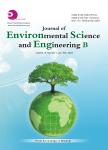Integrating Remote Sensing and Field Survey to Map Shallow Water Benthic Habitat for the Kingdom of Bahrain
Integrating Remote Sensing and Field Survey to Map Shallow Water Benthic Habitat for the Kingdom of Bahrain作者机构:Department of Geoinformatics College of Graduate Studies Arabian Gulf University Manama 22979 Bahrain Department of Earth and Ocean Sciences University of North Carolina Wilmington-UNCW Wilmington North Carolina 28403 USA Department of Natural Resources and Enviro. College of Graduate Studies Arabian Gulf University Manama 22979 Bahrain Department of Biology University of Bahrain Sakheer 32038 Bahrain Department of Student Affairs University of Bahrain Sakheer 32038 Bahrain Department of Landscape Architecture University of Dammam Dammam 31441 Saudi Arabia
出 版 物:《Journal of Environmental Science and Engineering(B)》 (环境科学与工程(B))
年 卷 期:2017年第6卷第4期
页 面:176-200页
学科分类:12[管理学] 1204[管理学-公共管理] 081603[工学-地图制图学与地理信息工程] 07[理学] 08[工学] 070503[理学-地图学与地理信息系统] 081303[工学-城市规划与设计(含:风景园林规划与设计)] 0705[理学-地理学] 0816[工学-测绘科学与技术] 0813[工学-建筑学] 0834[工学-风景园林学(可授工学、农学学位)]
主 题:Landsat 8 marine water column correction scuba diving GIS (Geographic Information System)
摘 要:Identification and classification, as well as mapping of marine habitats, are of primary importance to plan management activities, especially in disturbed ecosystems like the ones in the marine areas of Bahrain. Remotely sensed Landsat-8 imagery coupled with field survey was used to identify, classify and map the benthic habitats in Bahrain marine area. The used geospatial techniques include advanced image processing procedures, which comprise of radiometric and atmospheric corrections, sun glint removal, water depth correction and image classification. Extensive ground-truthing analyses through in-situ field surveys by a team of scuba divers were conducted in October 2014 and June 2015 to inform and refine the classifications. The variables collected from this survey included physical and chemical characteristics of the water, habitat type, substrata, fauna and flora. A total of 176 field points were collected and utilized to perform an accurate assessment of the image classification. Initial habitat classification resulted in 20 habitat categories. However, due to the inability of the Landsat-8 sensors to accurately discriminate that level of classification, categories were merged into seven classes. The derived map shows that the benthic marine habitats of Bahrain consist of deep water (2,523 km2), rock (1,738 km2), sand (1,191 km2), deep water/sand (1,006 km2), algae (922 km2), seagrass (591 km2) and corals (275.50 km2). Although limited by the spatial and spectral resolutions of Landsat 8, the used methods produced a suitable map of the benthic habitats within the marine area of Bahrain with an overall accuracy of 84.1%. The use of very high spatial resolution satellite imagery will most likely increase such accuracy significantly.



